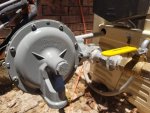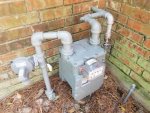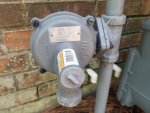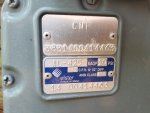- Mar 5, 2020
- 60
- Pool Size
- 18000
- Surface
- Plaster
- Chlorine
- Salt Water Generator
- SWG Type
- CircuPool RJ-45 Plus
This is installed in the gas plumbing to my pool heater. Is it a "pressure regulator"? If yes, does the writing in the middle indicate it expects an input pressure between 6 and 15 inches of water column, or that it provides an output in that range? If the first, then what does it do if the input pressure is too low? If the latter, how does it output a minimum level of pressure?






